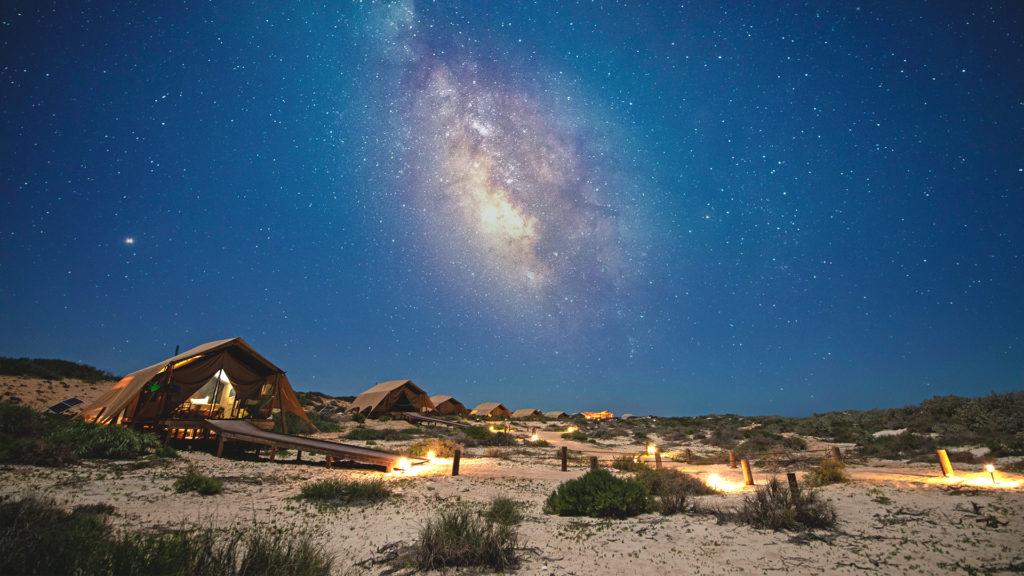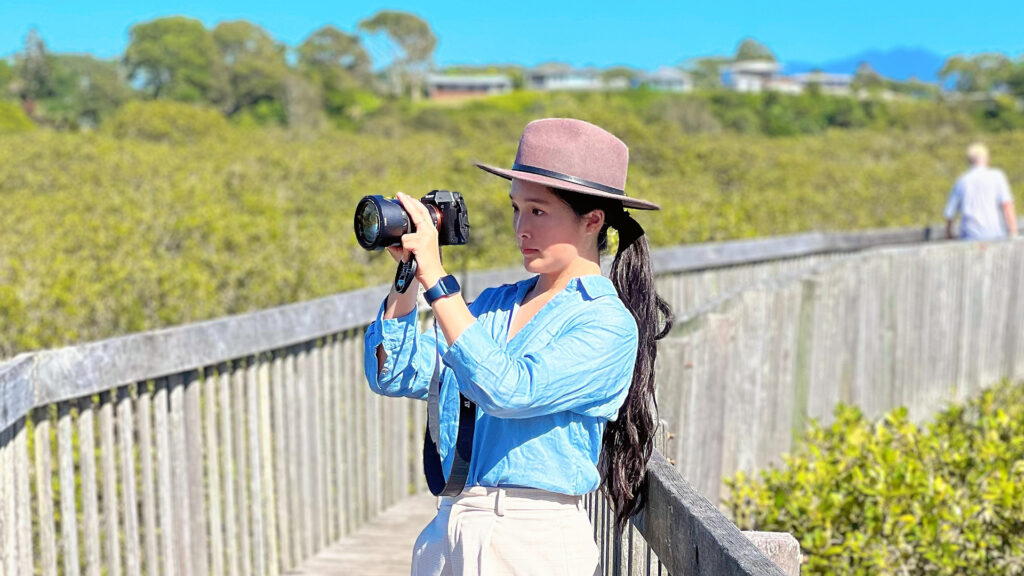The rise of dark sky tourism
WORDS
Charles Rawlings-Way
It’s human nature to be curious about the unknown. Curiosity has driven us to cut through the dense mesh of the Amazon rainforest, to drive a flagpole into the ice at the South Pole, to send submarines to the bottom of the Mariana Trench… even to leave footprints on the surface of the moon. But what happens when all of the unknown places become known? The answer is right before our eyes– even if an increasing number of us can’t see it.
With the global population now topping 7.7 billion, most of whom live in urban areas, our planet is getting seriously crowded—and seriously illuminated at night. It could be argued the electrification of our cities through the 20th century is humankind’s greatest piece of cleverness: most of us can now cook, walk the streets, go to the bathroom or read a book at night without having to carry an oil lamp or snuff out a candle afterwards.
But all this lustre has created a problem: the world now suffers from ‘light pollution’ to such an extent that, according to the Light Pollution Science & Technology Institute in Italy, around 80 per cent of us can no longer see many stars at night. Further studies suggest that by 2025, most people in Europe and North America won’t be able to see much of the night sky at all! There’s a real chance that for our kids, the nursery rhyme Twinkle, Twinkle, Little Star may lose its status as a soothing lullaby and become a confusing, redundant piece of poetry.
And the problem isn’t just visual. The over-lighting of our urban areas disrupts the natural day/night diurnal rhythms of plants, animals and people, fundamentally destabilising our environment. Too much artificial light can be harmful to human health and mental wellbeing, with some studies even linking the surplus of light with rising crime levels.


And of course, electric light needs a power source: if we’re wasting light, we’re wasting energy resources, contributing to a climate future that may have a far more profound impact on humanity than not being able to see the night sky.
As our twinkling, twinkling little stars have faded, there’s been a rise in a new kind of human curiosity: dark sky tourism. Overseen by the International Dark-Sky Association in Arizona, dark sky Tourism involves visiting places where artificial lighting is either absent or kept to a responsible minimum, so the night sky can be viewed in all its scintillating glory.
There are currently 115 designated Dark Sky Places around the world, divided into six categories of varying darkness. International Dark Sky Sanctuaries are the darkest of the dark – remote and fragile areas where stars shine their brightest. Pitcairn Island in the South Pacific, Stewart Island off the bottom of New Zealand, the Kalahari Desert in South Africa, the Elqui Valley in northern Chile…all sensational spots for a bit of stargazing, but rather hard to get to.

There are also International Dark Sky Reserves, International Dark Sky Communities, Urban Night Sky Places and Dark Sky Friendly Developments of Distinction…but for most tourists and visitors, Dark Sky Parks offer the best bang for your nocturnal buck. These are relatively easy-to-access locations – Big Bend National Park in Texas, Bodmin Moor in southwest England, Eifel National Parkin Germany and Warrumbungle National Park on the Australian eastern seaboard – where on a clear night you’re guaranteed of seeing a mind-blowing cosmic display. Over on Australia’s west coast, Cape Range National Park is famous as the jumping-off point for explorations of Ningaloo Reef – a glorious World Heritage–listed environment where whale sharks cruise past outcrops off flourishing coral. But Cape Range is also a place where the dark outweighs the light – for wandering dark sky enthusiasts, this is the promised land!
Within the national park, Sal Salis Ningaloo Reef makes a terrific base: snorkel, kayak and hike during the day, then prime yourself for uninterrupted, unpolluted views of the Milky Way after dark.
As a further boon for astronomers, Sal Salis will find itself in the path of a total solar eclipse in April 2023. This rare event – when the moon moves between Earth and the sun, blocking the sun’s rays and turning daylight into darkness – happens somewhere on Earth every 18 months, but only recurs in any one spot every 300 or 400 years.
Solar eclipses caused ancient societies untold amounts of fear: cowering in their huts, they watched as terrifying mythological beasts – everything from wolves and mountain lions to gigantic frogs – devoured the sun. But fear not: the local whale sharks are happy to stay out on the reef. And when daylight returns, you’ll have plenty of time to set up your deckchair, ready for some of the best dark sky stargazing on the planet.
To book your stay at Sal Salis visit https://salsalis.com.au/.



